Click the points on the map to learn more.
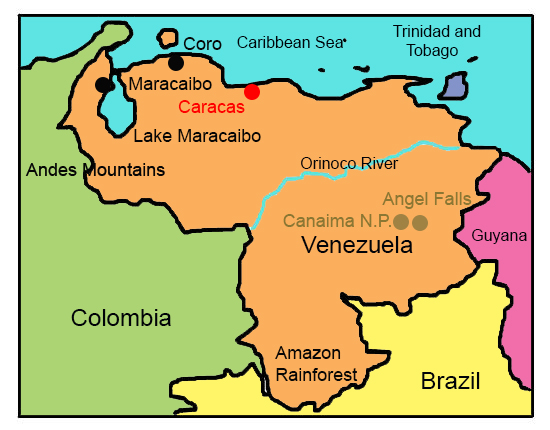
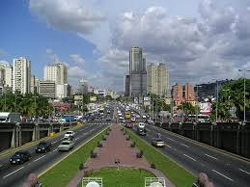 |
CaracasIn 1567, Diego de Losada founded the city of Caracas in his ideal location - a city in a valley with potential for agriculture, close proximity to a port, and temperate weather. Caracas is the capital of Venezuela and the country’s hub of industry, education, commerce, and culture. Caracas now spreads over almost all of the valley’s inhabitable area, with shantytowns reaching up into the hills in every direction. |
| Back to Map | |
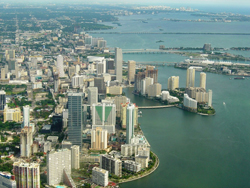 |
MaracaiboMaracaibo is the second largest city in Venezuela. It is located on the western shore of the channel connecting Lake Maracaibo (the largest natural lake in South America) with the Gulf of Venezuela. The town was settled in the first decades of the 17th century, and while it changed hands multiple times in the struggle for independence from Spain, the area was generally less involved in the wars than other parts of Venezuela. Since the discovery of petroleum in 1917, it has become the oil center of Venezuela. |
| Back to Map | |
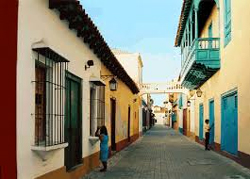 |
CoroCoro is the only surviving example of the fusion of local traditions with Spanish Mudéjar and Dutch architectural techniques. Founded in 1527, Coro was one of the first colonial towns and was the first capital of the Venezuela Province. Its Port of La Vela was the first South American town to achieve independence from Spain. The town is still home to over 600 historic buildings, and is a UNESCO World Heritage Site. |
| Back to Map | |
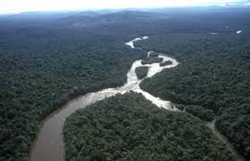 |
Orinoco RiverThe 1,330 mile-long Orinoco River is one of the longest rivers in South America. The vast majority of the river runs through Venezuela while a smaller portions flows through Colombia. The mouth of the river was first documented by Christopher Columbus in 1498. |
| Back to Map | |
 |
Amazon RainforestThe Amazon is the world’s largest tropical rainforest. It covers 2.1 million square miles of land, primarily in Brazil, Peru, and Colombia. The Amazon is least 55 million years old, and is home to about 2.5 million insect species, as well as 40,000 different plant species and almost 1,300 different species of birds. The Amazon rainforest accounts for more than half of the world’s remaining rainforests. Scientists estimate the forest holds 390 billion individual trees of 16,000 different species. It is referred to as the ‘Lungs of the Planet,’ as it produces 20% of the world’s oxygen. |
| Back to Map | |
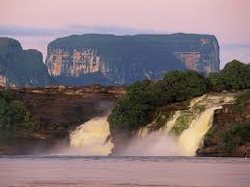 |
Canaima National ParkThe second largest national park in Venezuela, Canaima National Park is roughly the size of the country of Belgium. The park is home to more than 550 species of birds, as well as hundreds of other animals and plant species. The park is only accessible by air; there are no overland routes into the park. Canaima National Park became a UNESCO World Heritage Site in 1994. The park is famous for its tepuis, large unusual rock formations that rise steeply with vertical walls and flat tops. |
| Back to Map | |
 |
Angel FallsAngel Falls is the world’s highest uninterrupted waterfall at 3,212 feet above sea level.The waterfall plunges from a cleft near the summit of mountain Auyán-tepu into Devil’s Canyon, some 2,648 feet below. Discovered accidentally by James Angel in his plane in 1933, the falls were named after him in 1937. Canaima National Park, where the falls are located, was founded in 1962. Between December and April, when rainfall is much lighter, the falls diminish and all but evaporate. |
| Back to Map | |
 |
Andes MountainsThe Andes make up the world’s longest continental mountain range. The range stretches 4,300 miles in length, 430 miles in width, with an average height of about 13,000 feet. The Andes extend through Venezuela, Colombia, Ecuador, Peru, Bolivia, Chile, and Argentina. The mountains are separated into three divisions based on their climate: the Tropical Andes, the Dry Andes, and the Wet Andes. The Andes are part of the American Cordillera, a chain of mountain ranges that make an almost continuous line of mountains that form the western “backbone” of North, Central, South America and Antarctica. |
| Population: | 30,410,000 |
| Area: | 353,841 square miles |
| Capital City: | Caracas |
| Largest City: | Caracas |
| Currency: | Venezuelan Bolivar |
| Official Language: | Spanish |
| GDP (Gross Domestic Product) | $438 billion |
- Venezuela means “little Venice” in Italian, named by Italian Amerigo Vespucci on an expedition during which he reported the region reminded him of his home city of Venice, Italy
- Venezuela is considered to be among the 17 most mega-diverse countries (biodviersity) in the world in terms of species
- Venezuela has the world's largest oil reserves
- Venezuela is one of the most urbanized nations in Latin America.
- The official name of Venezuela is the Bolivarian Republic of Venezuela
- Venezuela is home to at least 25,000 species of orchids
- Because the government subsidizes the oil industry, Venezuelans enjoy the cheapest gas prices in the world
- Venezuelans have won major world beauty pageant titles 21 times, more than any other country in the world
- Venezuela is a founding member of OPEC (Organization of Petroleum Exporting Countries)
- Venezuela has the world's highest rate of inflation. This means that prices rise and the currency loses value |
|
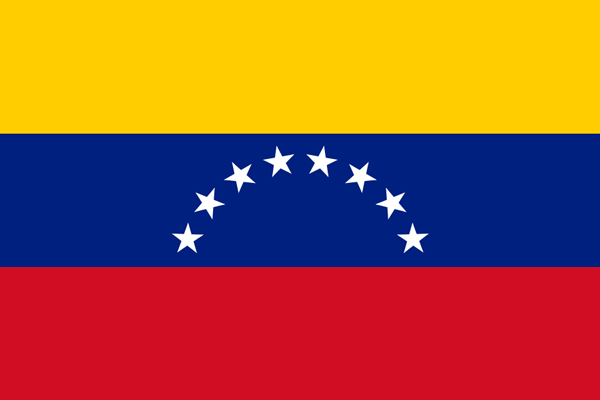 |
|
The yellow band stands for the riches of the land, the blue stands for the courage of its people, and the red for the blood shed in gaining independence. The original seven stars of the flag represented the seven provinces in Venezuela that united in the war of independence. In 2006, President Hugo Chavez ordered that an eighth star be added to the arc, to represent the historic province of Guyana. |
|